Croatia’s cuisine has many influences, thanks to its central position in Europe. The Mediterranean is one, apparent in the use of tomatoes, eggplants, bell peppers, herbs, olive oil, and abundant seafood.
Some of the meatier dishes are a legacy of the central European countries that lie to the east of Croatia. Italy, just across the Adriatic, has brought pasta and risotto to the table, while the grape varieties that produce Croatia’s award-winning wines can also be found in Austria, Italy, France, and Greece.
You can dine well in Croatia in relatively simple, unpretentious establishments, called konoba. Because there’s so much emphasis on local, seasonal ingredients, the best dishes are often the most uncomplicated—a fresh fish drizzled with local olive oil and scattered with herbs, for example, or mussels in a white wine broth, or pasta sprinkled with grated truffle.
Here are 25 of the finest examples of Croatian cuisine.
Fuži (Pasta)

Fuži
Pasta is very popular in Croatia thanks to the influence of nearby Italy. However, Croatians have their own names and shapes and use sauces that make the most of their own fresh ingredients.
Making fuži is a laborious task, as the pieces of pasta dough are wrapped around the handle of a wooden spoon to shape them. The pasta is served with a creamy, heavily truffled sauce, or sometimes with a meatier version, made from whatever is available, such as beef, chicken, or even game.
Buzara
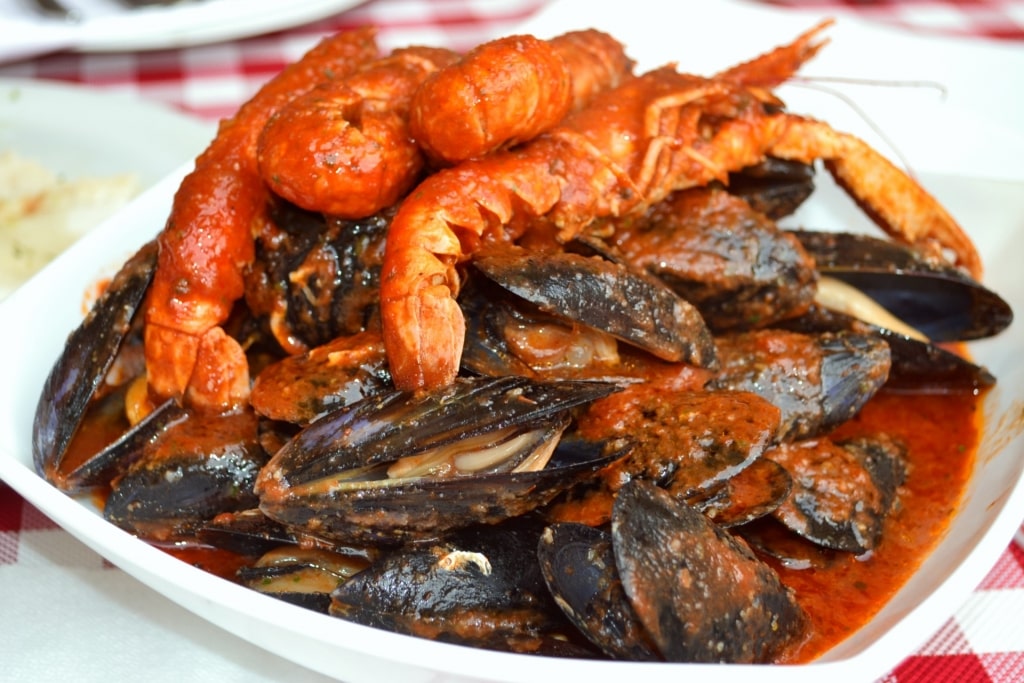
Buzara
Buzara is a simple but delicious dish similar to the French moules marinière. Mussels are stewed in a wine-based broth with garlic, fresh herbs, and breadcrumbs. You’ll find buzara all along the coast, where the mussels will have been harvested that same day.
Crni Rižot (Risotto)

Crni rižot
Squid ink risotto features on pretty well every menu along the coast and is one of Croatia’s most famous dishes. This rich risotto is packed with squid and sometimes other seafood, its black color and intense flavor coming from the squid ink.
Be warned: although the taste is delicious, this popular European food can temporarily turn your teeth and tongue an alarming shade of black, so drink lots of water (or wine) and don’t pose for photos over your meal until you’ve checked in a mirror.
Njoki (Gnocchi)
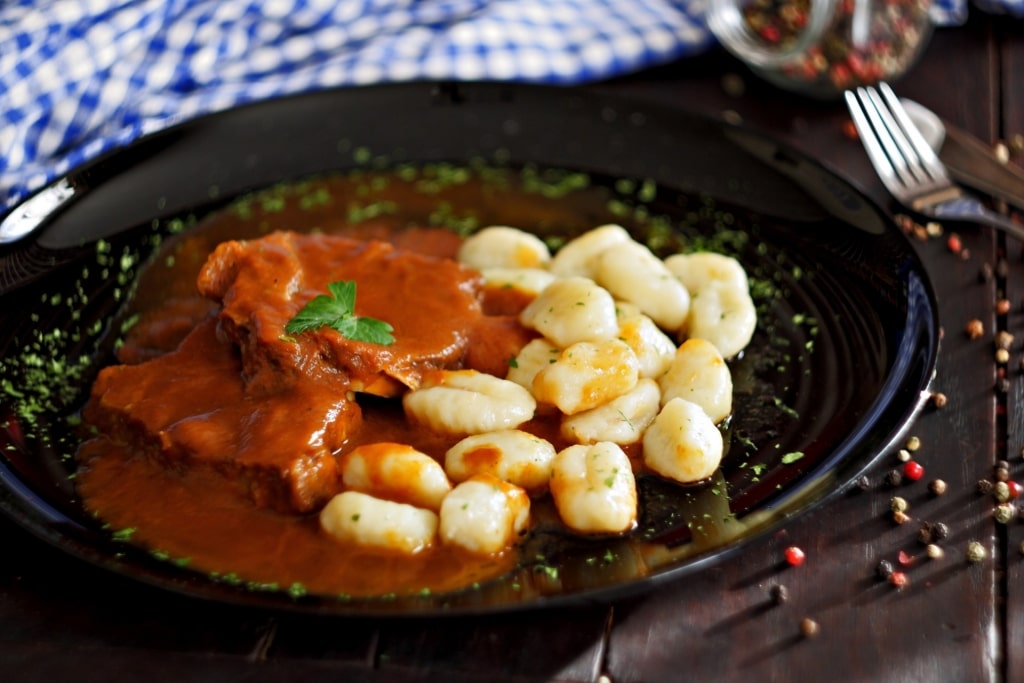
Njoki
Try to pronounce njoki and you’ll realize what it is: gnocchi, similar to what you’d be offered in Italy. Njoki is a comforting dish of small potato dumplings that also include semolina and egg.
They’re normally served as a side to pašticada, a rich, beefy stew, but also make a great vegetarian dish with melted butter, fresh sage, and a sprinkling of grated cheese, or even truffle.
Pag Cheese
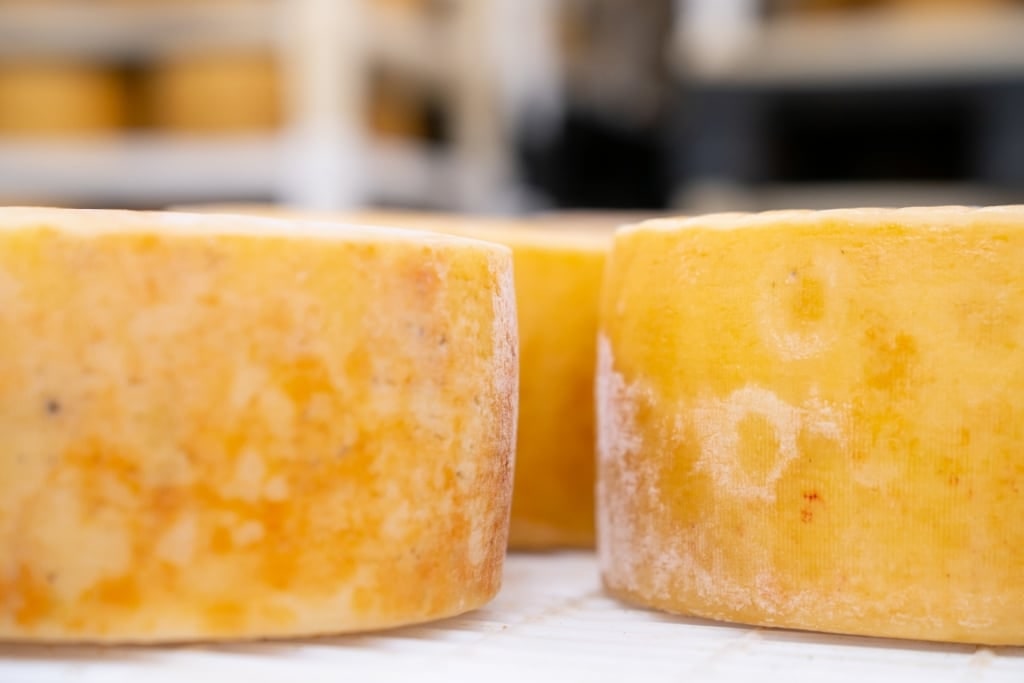
Pag cheese
Pag is a salty sheep’s milk cheese from the eponymous island in northern Croatia, near Zadar, where there are many more sheep than humans. The sheep feed on wild herbs imbued with a faint tang of salt, thanks to the strong Bura wind that gusts across the sea in winter.
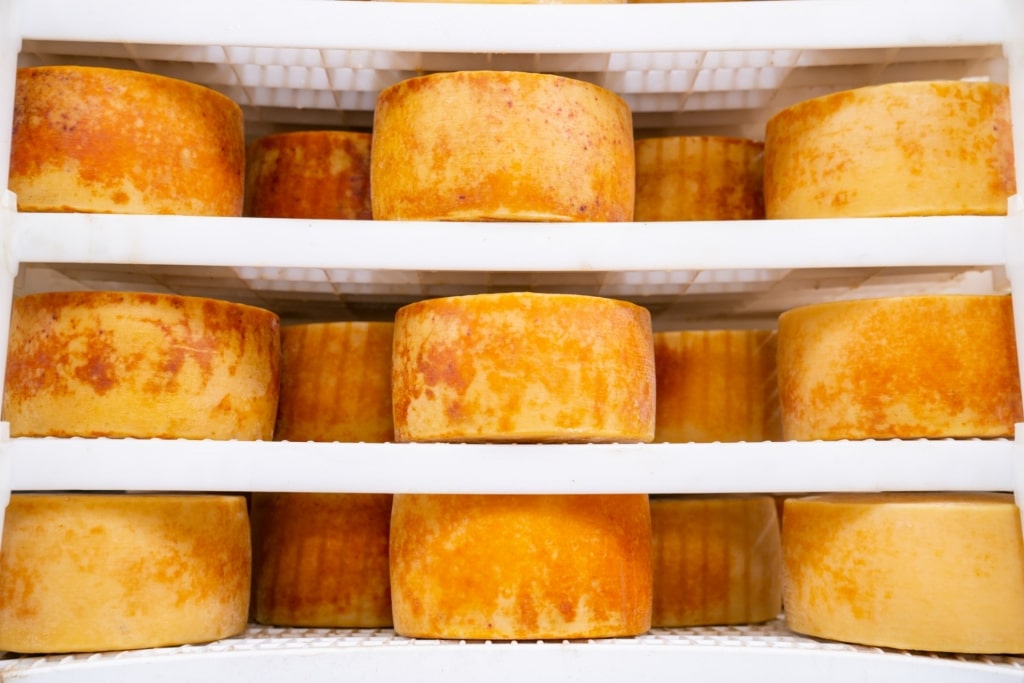
Pag cheese
You’ll see big wheels of pag in markets and in specialty cheese shops. Croatia’s answer to parmesan, aged pag is crumbly and has an intense flavor that comes from a long maturation of up to 18 months.
Younger cheese bears more resemblance to the creamy manchego from Spain. Either way, enjoy it grated over pasta and risotto dishes, or just on its own with a little olive oil.
Olive Oil
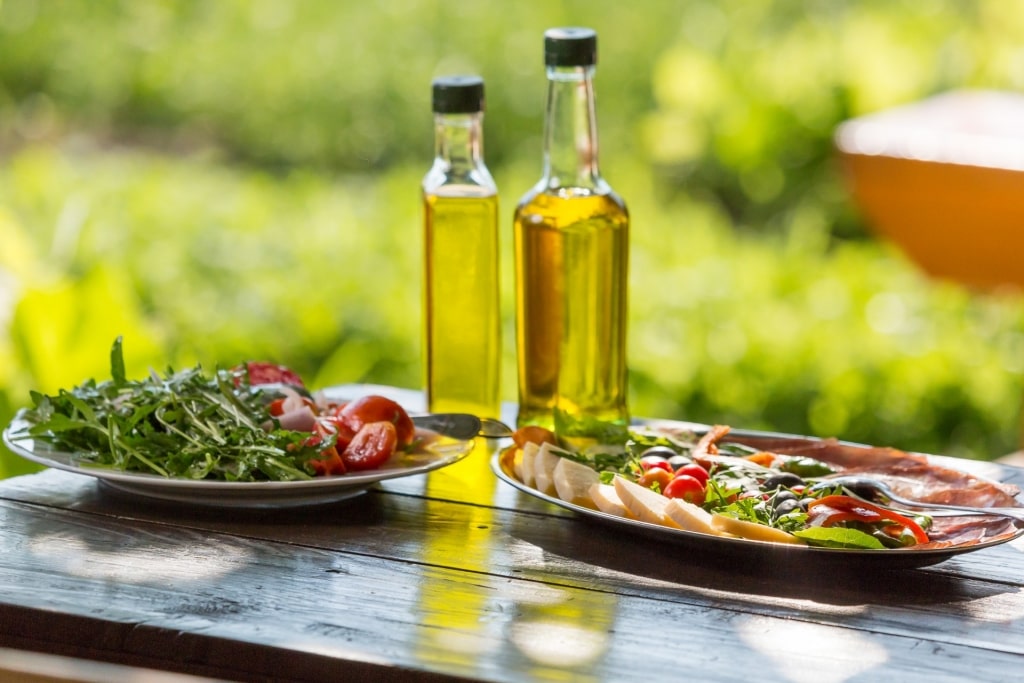
Olive oil
Olive trees have been cultivated in what’s now Croatia for 2,000 years, and the locals have refined olive oil production into a fine art, winning many international awards in the process.
Olive oil is used extensively in cooking and as a salad dressing, of course, but the best way to taste it is neat. Pour some onto a plate and dunk crusty bread in it to absorb that quintessentially Mediterranean flavor. A bottle of EVOO (extra virgin olive oil) from Istria makes a great gift to take home, too.
Soparnik
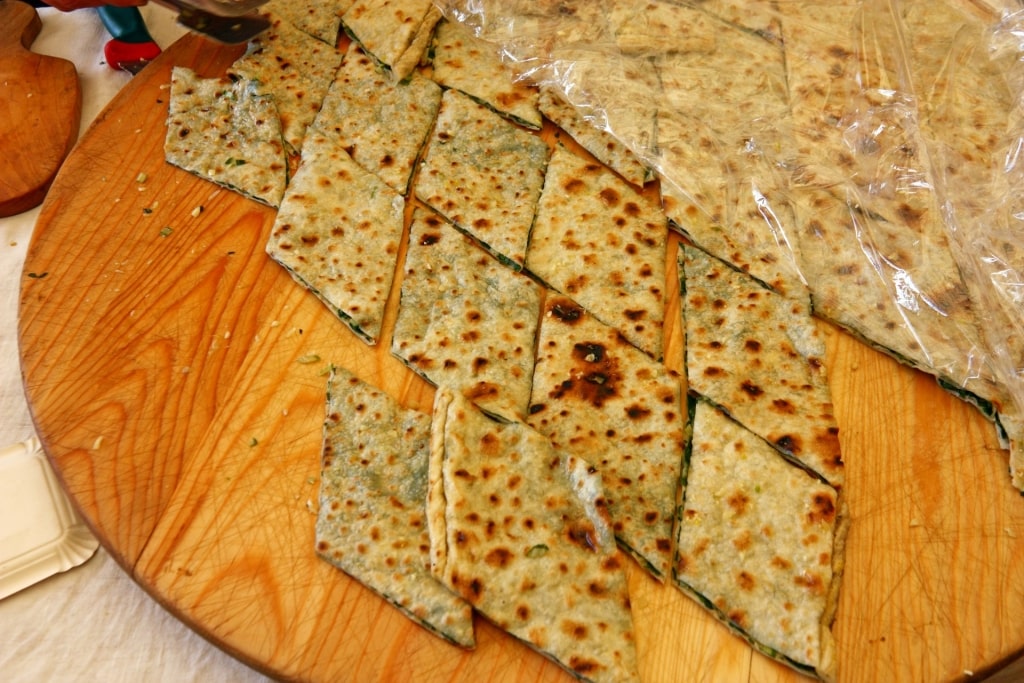
Soparnik
A delicious option for vegetarians, soparnik is a Croatian classic; a thin pastry pie filled with Swiss chard. Some even believe it to be the predecessor of the Italian pizza.
You’ll see soparnik for sale in markets, prepared fresh in one giant, circular pie that’s sliced up when cooked. The filling is simple: olive oil, fresh parsley, scallions, garlic, and chard, but the end result is extremely delicious.
Oysters
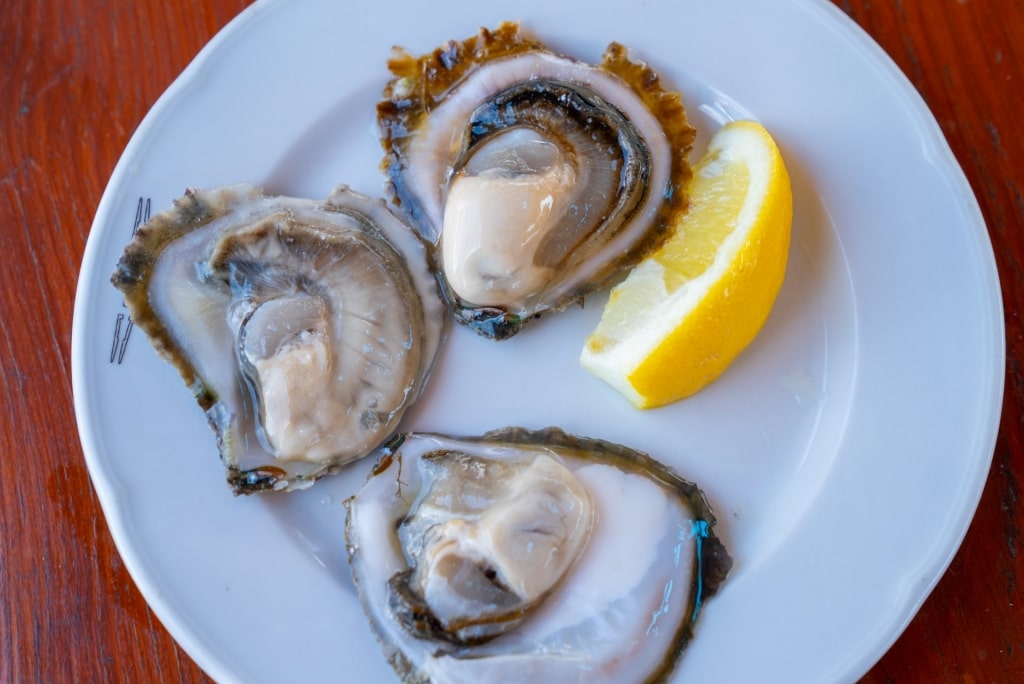
Oysters
In the coastal town of Mali Ston, just over an hour from Dubrovnik, oysters are farmed and appear everywhere: on menus, in bars, and on stalls at the side of the road.
There’s even an annual oyster festival here, in March. Ston oysters are known for their intense flavor, and locals regard themselves as connoisseurs.

Ston
If you’re a fan, the trip from Dubrovnik is worth it. Ston is something of an unsung hero in Croatia, but it’s an intriguing little town, defended by more than four miles of chunky ramparts dating back to the 14th century and snaking over the hillside.
You’ll find plenty of unassuming local restaurants here where you can kick off lunch with a vast platter of freshly harvested Ston oysters.
Read: Most Beautiful Places in Croatia
Kulen Sausage
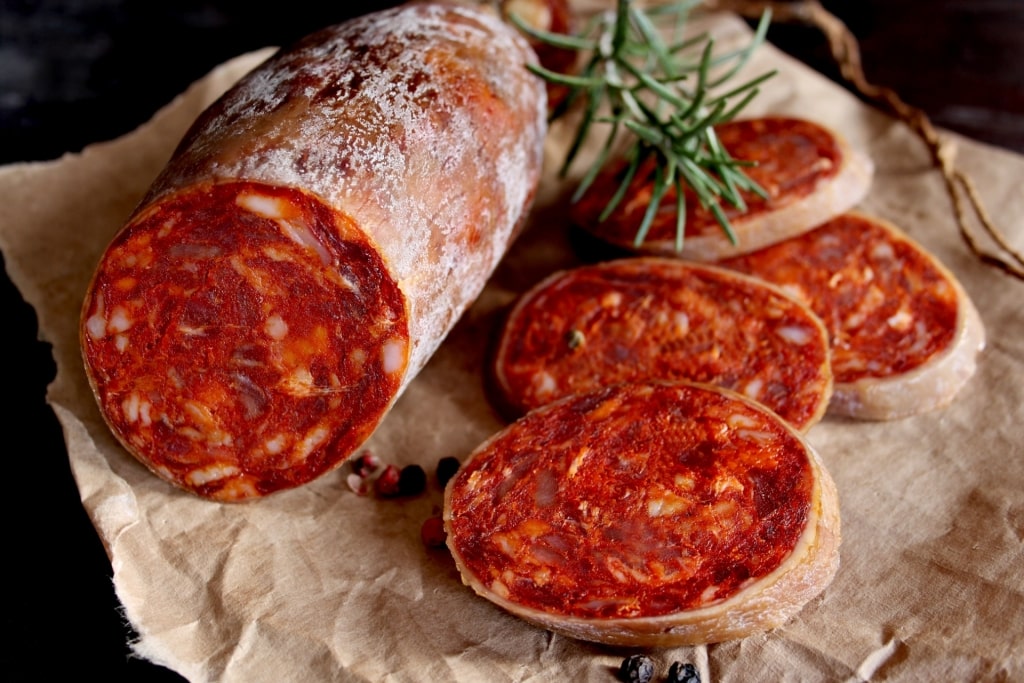
Kulen sausage
Croatians love their cured meats, and kulen is the country’s most prized sausage. It comes from valuable Mangalica pigs raised in Slavonia, in the east of the country, free ranging in the forest on a diet of acorns and barley.
The sausage is smoked over beechwood and then air dried, maturing for nine months, hence its status as a delicacy. All that’s added is salt, paprika, and garlic. Eat kulen with crusty bread and crisp white wine or a light red.
Ćevapi
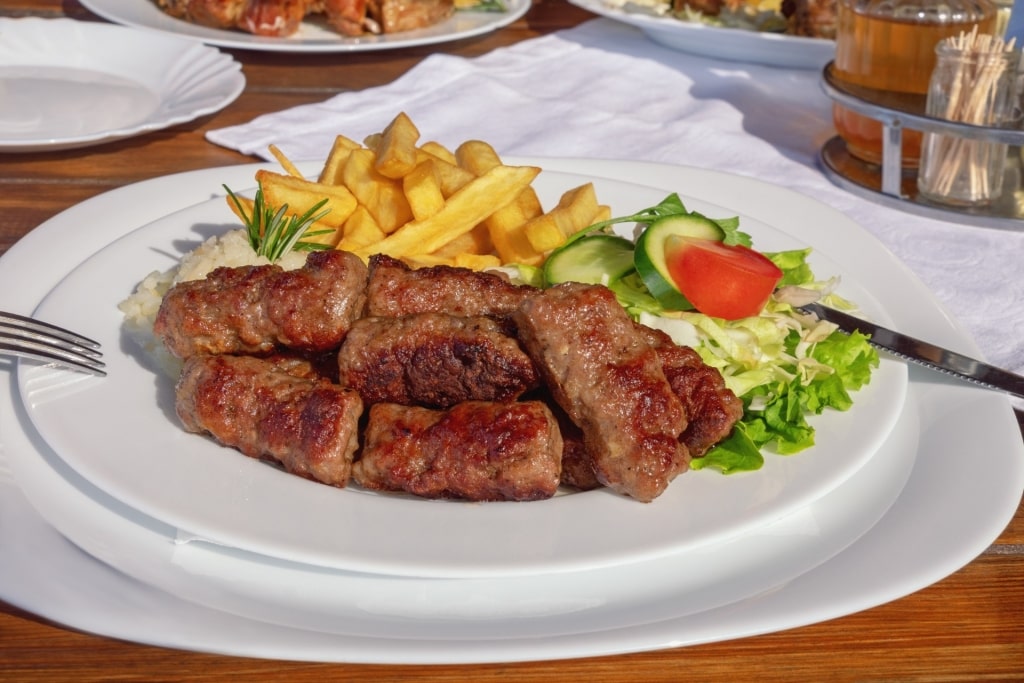
Ćevapi
A classic all over the Balkans, ćevapi is a meatball shaped like a stumpy cigar made from minced meat—beef, mutton or lamb—and seasoned with chopped onion, garlic, and fresh parsley.
The patties are served on flatbreads with ajvar, a delicious condiment made of roasted bell peppers and eggplant, with lots of olive oil and a dollop of soured cream.
Fritule
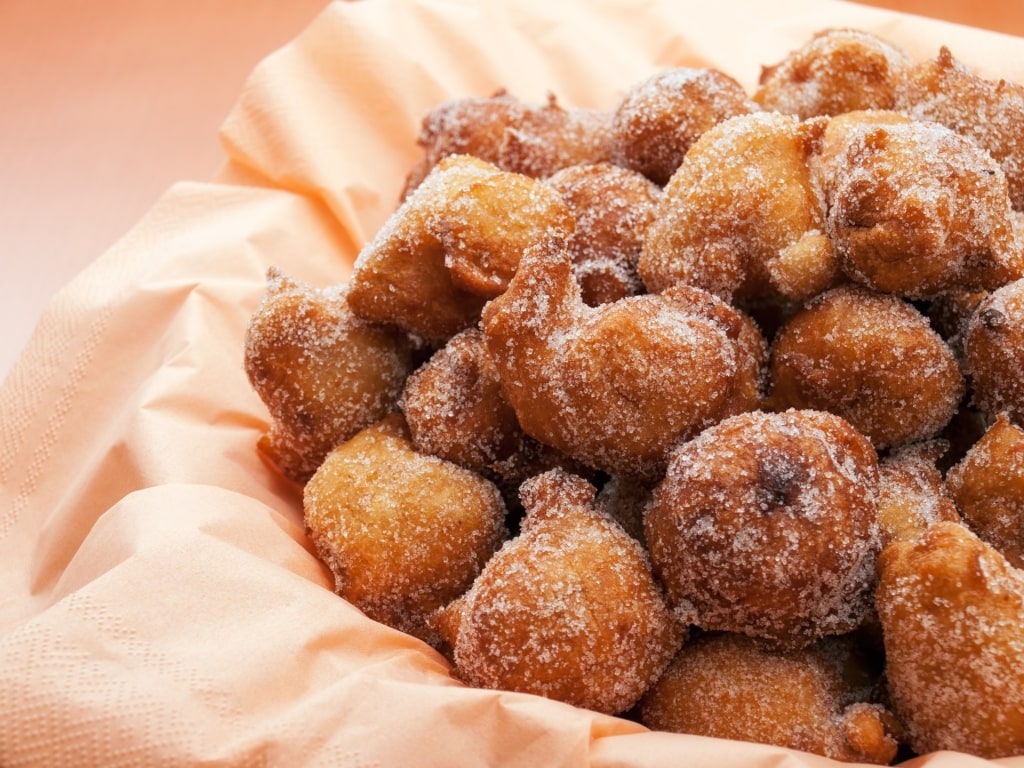
Fritule
Served at Christmas but often available outside the festive season, fritule are tasty little doughnut balls, deep fried and dusted with powdered sugar. Bite into one and the taste of rum and raisins will flood your mouth.
Some cooks add lemon or orange zest to their fritule. Others up the decadence by dunking the doughnuts in melted chocolate or caramel.
Brudet (Seafood Stew)
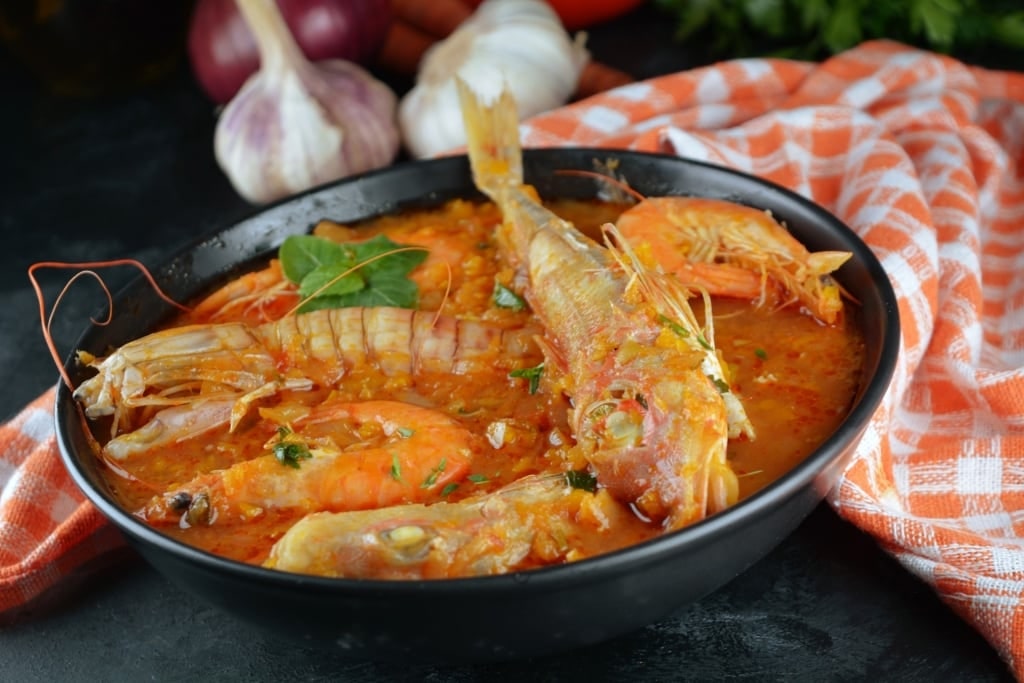
Brudet
Sometimes called brodetto, this simple but tasty seafood stew actually comes from neighboring Italy, where it’s been a traditional dish cooked by fishermen using offcuts from the day’s catch.
Essentially, brudet is a rich tomato base flavored with fish stock, herbs like bay leaves and rosemary, wine, and vinegar (traditionally used as a preservative), with whatever seafood is on hand to throw in.
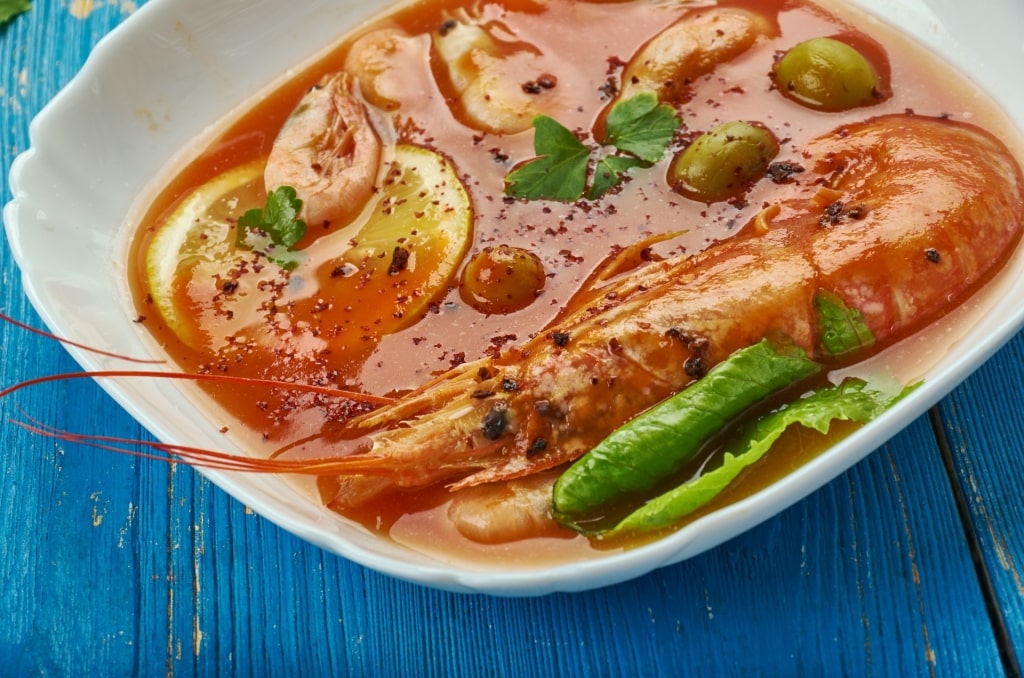
Brudet
Mussels, shrimps, squid, and clams are all fair game, as are chunks of firm fish, left on the bone. The stew isn’t stirred, which would break up the fish. Instead, a good brudet cook will simply swirl the pot to agitate the ingredients. Mop up the delicious sauce with fresh bread.
Pršut (Air-Dried Ham)

Pršut
Air-dried ham from Istria, or pršut (in Italian, this would be prosciutto), is ubiquitous in Croatia. A mouthful invokes the flavor of wild mountain herbs and the winter Bura winds in which it’s hung.

Pršut
You’ll find platters of pršit i sir—ham and cheese—on every menu, and there’s no better way to eat lunch in the sun than to sit down with this feast in front of you, along with some crusty bread and a bottle of chilled graševina white.
In the south, ham is smoked rather than air-dried, so has a different but equally delicious flavor.
Punjena Paprika
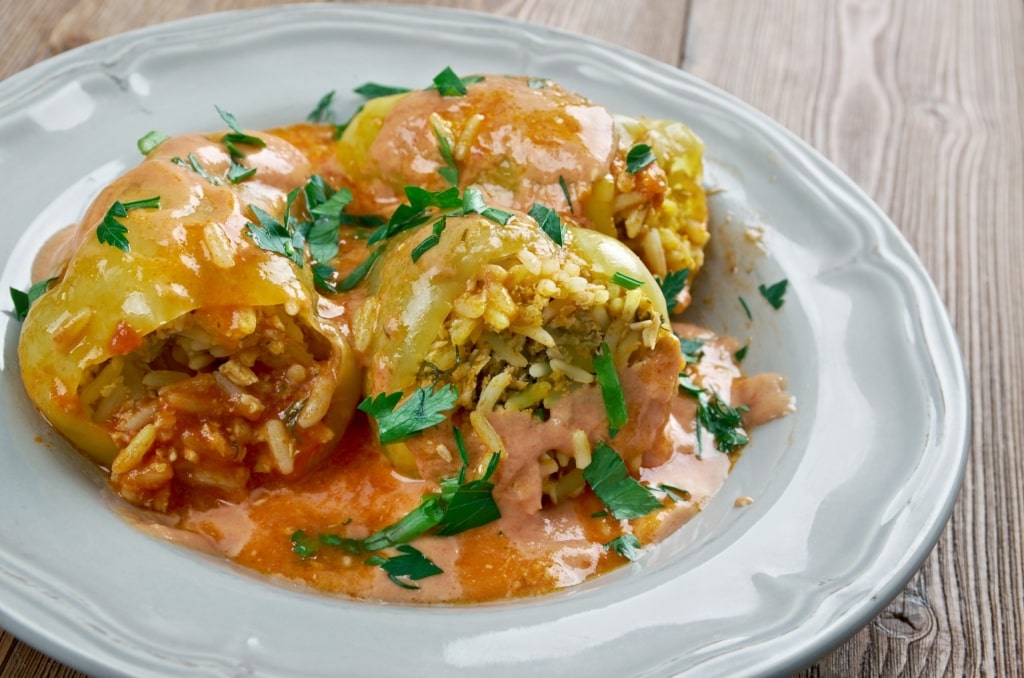
Punjena paprika
Popular all over the Balkans and south into Greece, stuffed bell peppers are a Croatian summer classic. Bell peppers in different colors are hollowed out and stuffed with a mix of rice, spiced meat, eggs, herbs, and spices, then baked in a tomato sauce in the oven, and served with a side of mashed potato.
Read: Best Summer Destinations in Europe
Burek
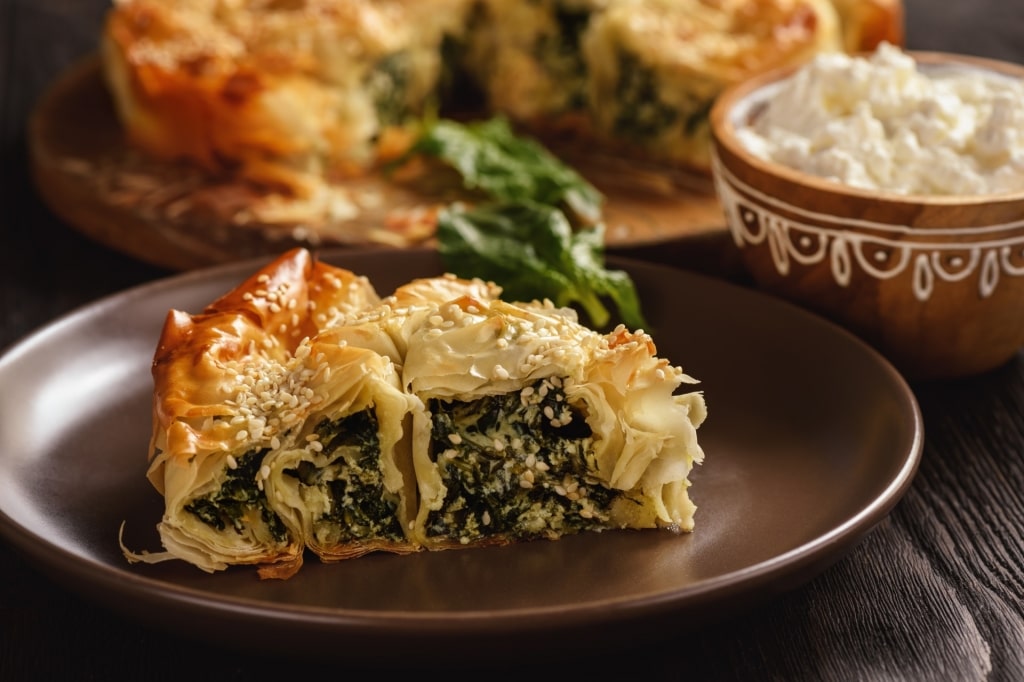
Burek
Layers of flaky pastry filled with cheese, meat, or for a sweet version, apple, burek pies can be anything from a mid-morning snack to a savior for hungry vegetarians; rich as its cuisine is, Croatia isn’t the most veggie-friendly country.
Look for a cheese and spinach filling, too, which is a marginally more nutritious version of this delicious and calorific snack.
Rošata

Rošata
This wobbly, creamy custard pudding is Croatia’s version of crème caramel. What’s different is that the flavoring comes from rose liqueur, or in some restaurants, maraschino cherry liqueur.
Bučnica (Savory Strudel)

Bučnica
Another great Croatian food for vegetarians to try, Bučinca is a savory strudel. Sour cream, butter, eggs, cottage cheese, and pumpkin are wrapped in phyllo pastry and baked. To Croatians, bučinca is a popular comfort food.
Savijača (Sweet Strudel)

Savijača
Croatians love their strudel, and savijača is a sweet version. Layered phyllo pastry is baked with cheese and a filling of apple or sour cherry (or in season, apricots), dusted with powdered sugar, and served with cream or a scoop of ice cream.
Sarma
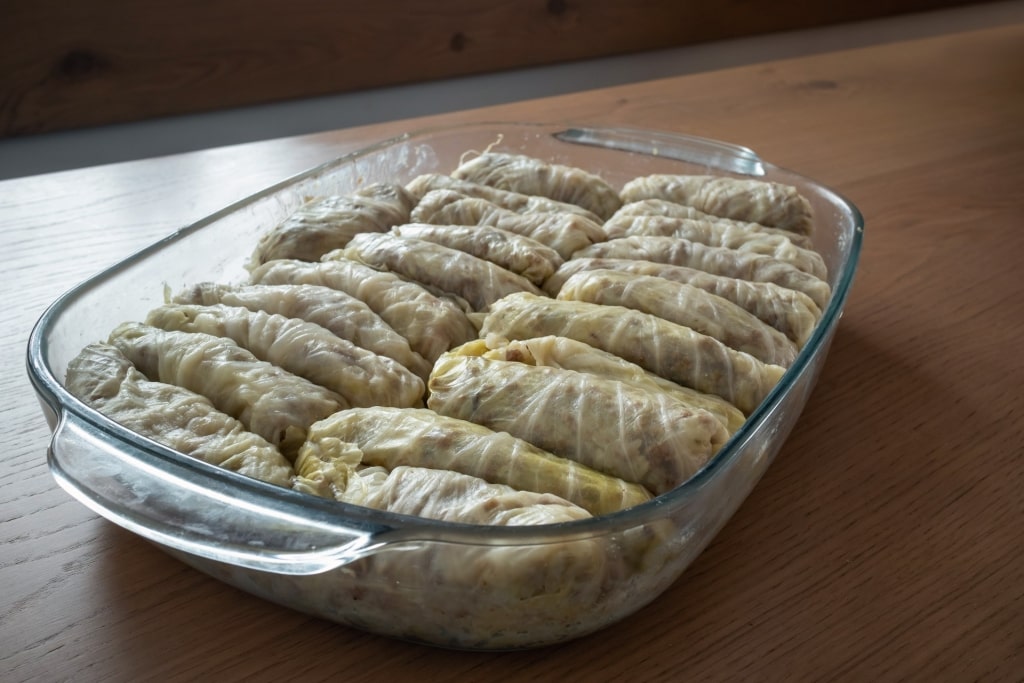
Sarma
You’ll find variations of these cabbage rolls all over the Balkans; in Greece, the filling is wrapped in vine leaves and the dish is called dolmades. In Croatia, though, sarma is made of spiced minced meat and rice wrapped in sauerkraut, a legacy of the country’s proximity to central Europe, where cabbage is popular.
The meat could be pork, beef, or both, flavored with paprika and smoked bacon. The little parcels are slow-cooked in water and served with mashed potato and a dollop of crème fraiche.
Maneštra

Maneštra
Maneštra is not dissimilar to Italy’s minestrone soup. Lighter versions, made with dried beans, carrots, celery, onion, and tomato, seasoned with black pepper and fresh parsley, may be served as a starter.
With the addition of pork ribs and sweetcorn, you’ve got a much heartier main course, popular as a winter warmer but available on menus year-round.
Zagrebački Odrezak (Schnitzel)

Zagrebački odrezak
If you’ve traveled to Austria, you’ve no doubt tried Wiener Schnitzel, thinly beaten veal coated with breadcrumbs and fried. Zagrebački odrezak is Croatia’s version.
The veal is tenderized and rolled around cooked ham and cheese before being dipped in beaten egg, coated in breadcrumbs, and fried. You may see chicken or pork versions on menus as well as veal.
The schnitzel is served with a side of fries, sometimes risotto, green peas, and a squeeze of fresh lemon.
Pinca
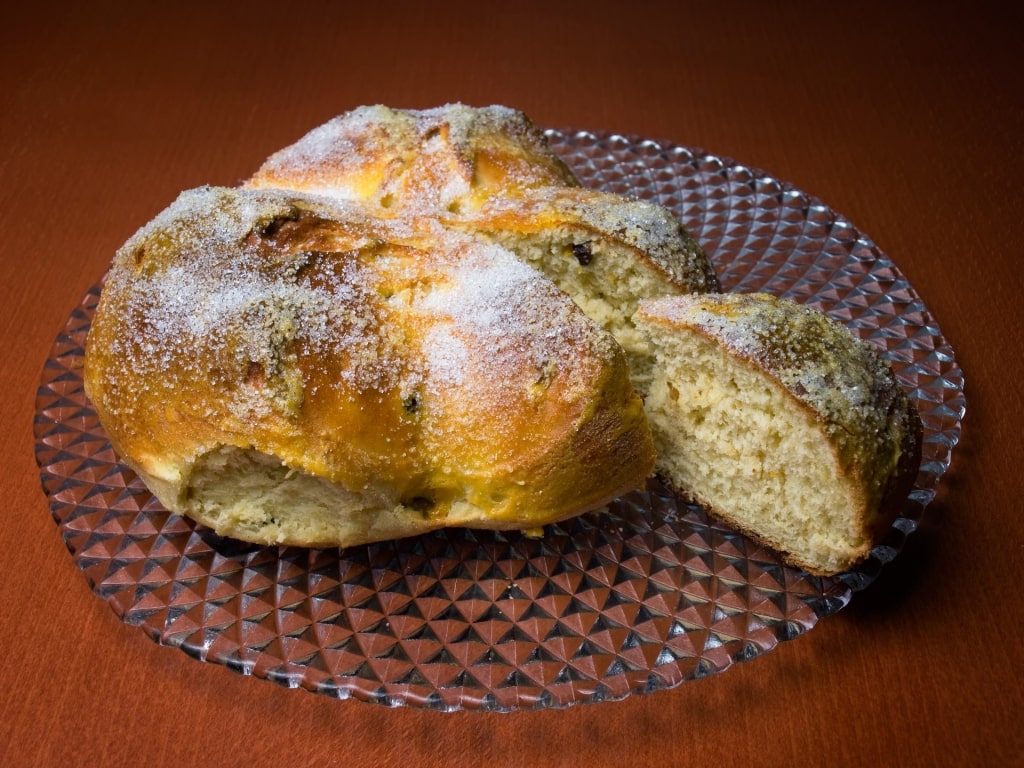
Pinca
A sugary sweet roll, pinca is an essential addition to the table at Easter, an important festival on the Croatian calendar. A rich yeast dough is combined with all manner of ingredients, from citrus zest to dried fruit, rum, and dessert wine, and then shaped into a loaf shape and sprinkled with sugar and chopped nuts before baking.
Truffles
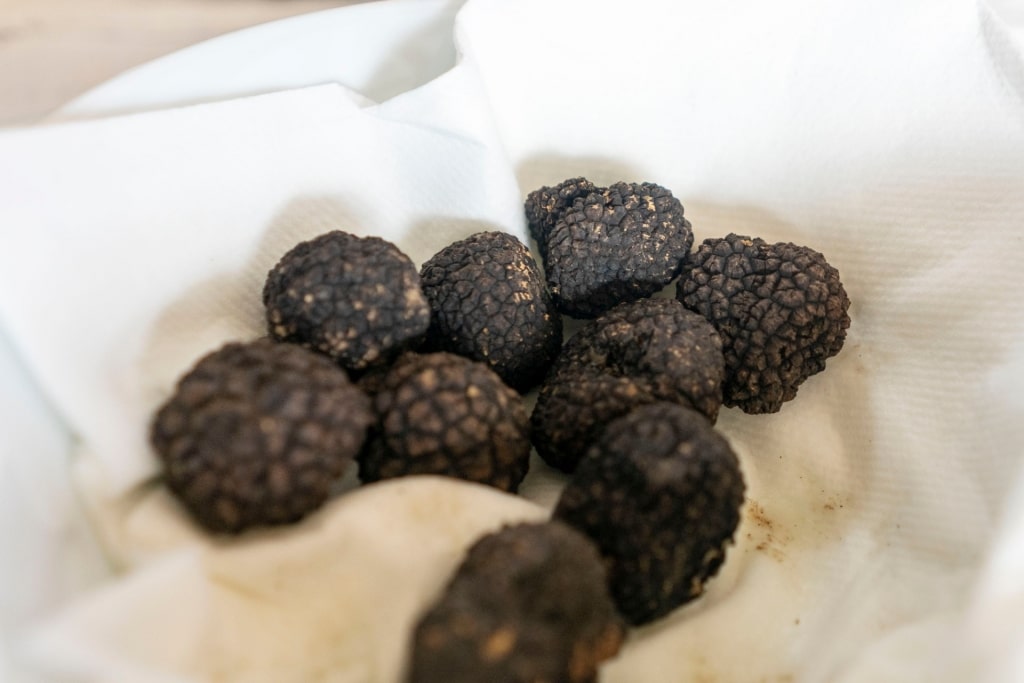
Truffles
In Croatia, truffles are harvested in Istria, to the north, usually around October. While you may not be around for the harvest season, you’ll find truffle shavings grated over several dishes, from pasta to risotto or even omelets. You can buy them dried as a souvenir, too, to bring back memories of those sunny days along the Adriatic coast.
Wine
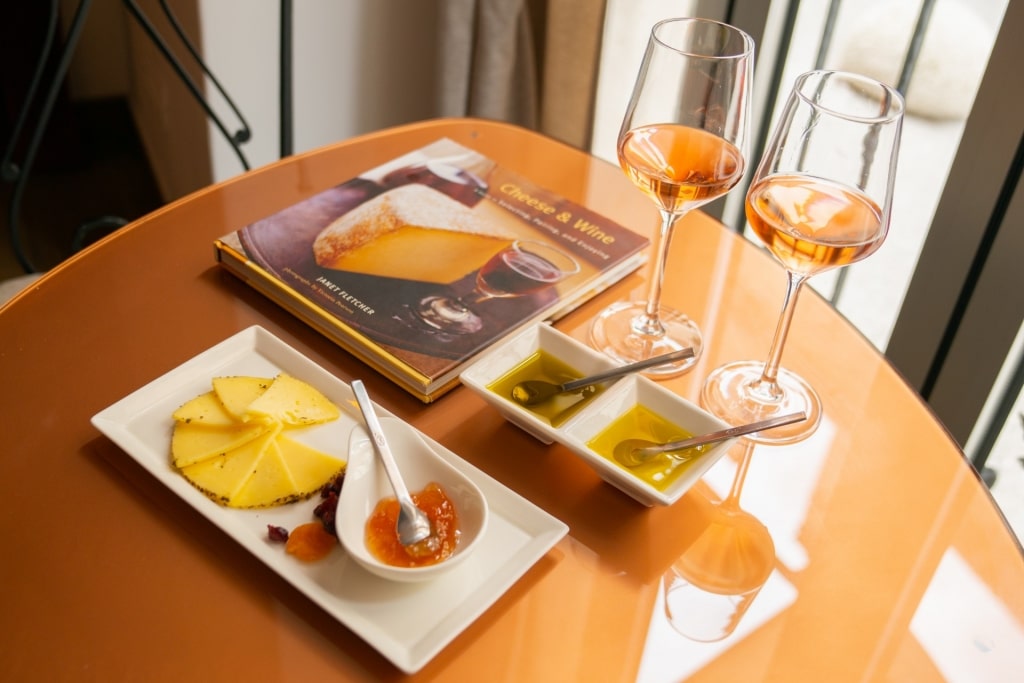
Croatian wine
Croatia is known for producing spectacular wines, with some boutique wineries practicing biodynamic and organic production. Many of the better wines are kept for domestic production, which is why you may not be familiar with them at home.
The most common white is malvazija, with notes of apricot and apple and a crisp minerality. This is an easy drinking wine, best enjoyed with seafood, as an aperitif before lunch, or when taking in a gorgeous sunset. Along the Dalmatian coast, you’ll find graševina on every menu, which is a dry, aromatic white.
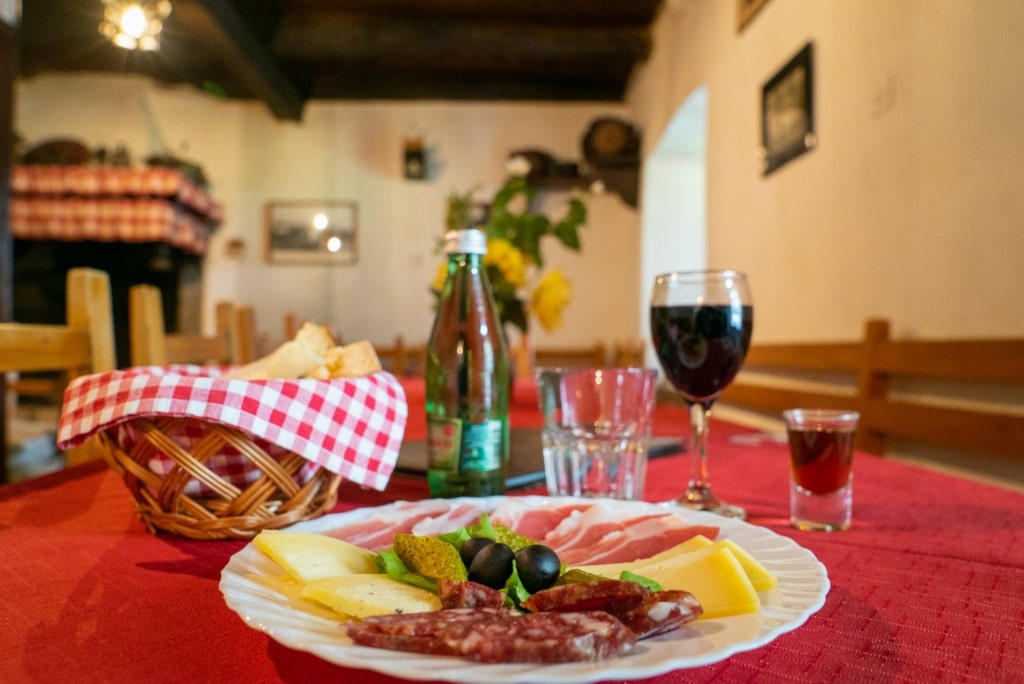
Croatian wine
Croatia’s most popular red is teran, robust and flavor-packed, typically consumed with meat dishes and pasta.
Read: Romantic Places to See on a Honeymoon in Croatia
Rakija
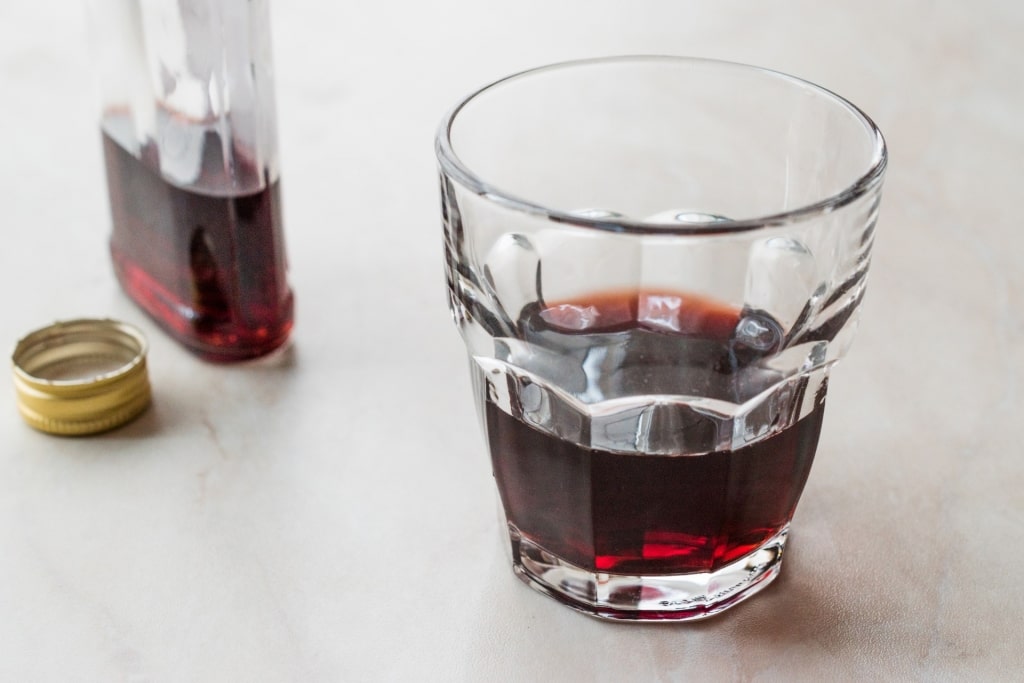
Rakija
Rakija is a distilled fruit spirit commonly drunk after a meal as a digestif. Often, the proprietor of a konuba will bring you a shot as a gesture of hospitality.
Rakija comes in various flavors. Perhaps the most familiar is šljivovica, or plum, but you could be offered variations flavored with honey, sour cherry, or fig.
The etiquette for rakija consumption is to raise your glass, make eye contact with your companions, clink, and down the fiery shot in one.
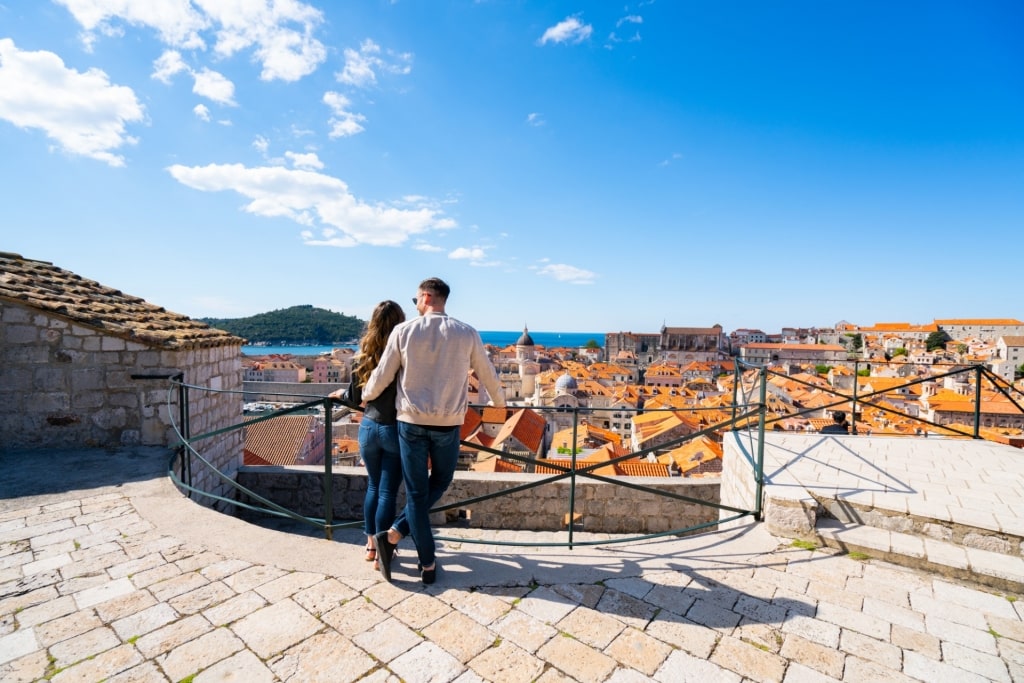
Dubrovnik
Tempted to graze your way from one end of Croatia to another? See the best of the country on a cruise with Celebrity. Browse itineraries on our website to plan your gourmet Croatian cruise vacation.



